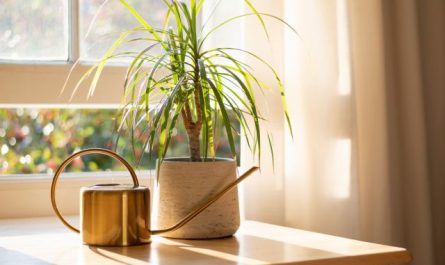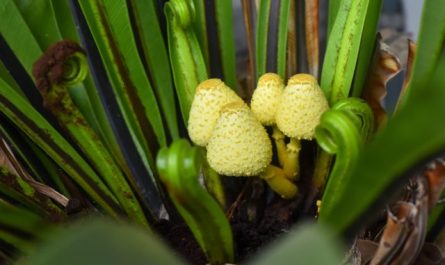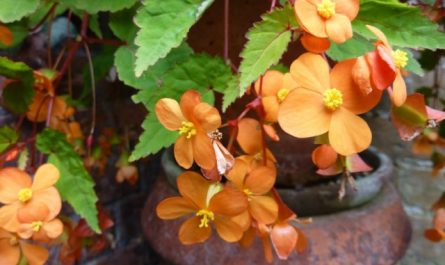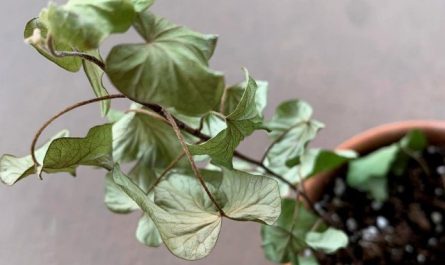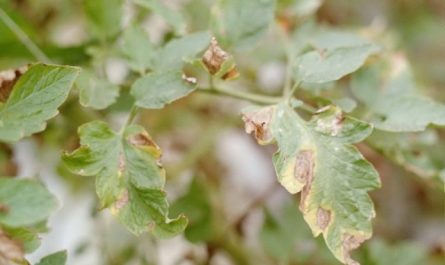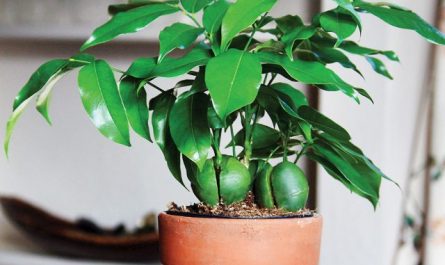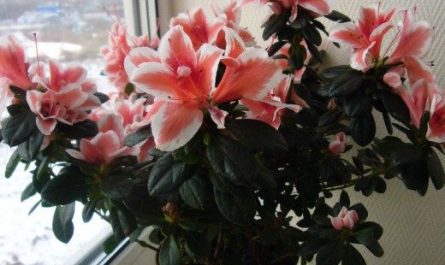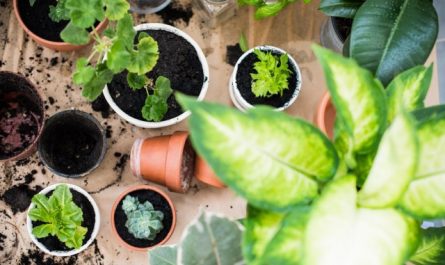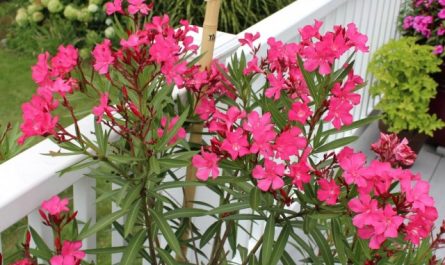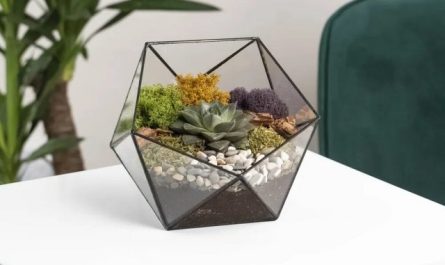The cinnamon tree, or cinnamon, is a tropical plant that grows in Sri Lanka. It requires a warm climate with lots of moisture, and it will not survive in our conditions. Fortunately, cinnamon is easy to care for and can be grown as an indoor plant. We will talk about how to grow cinnamon on a windowsill and harvest it in this article.

Features of cinnamon
The cinnamon tree (cinnamon verum) is also decorative. The leaves are glossy and oval, similar to a bay leaf. This similarity is not surprising, because cinnamon is from the Lauraceae family.
The plants themselves grow up to 15 meters in the wild, but indoors their height usually does not exceed 2-2,5 meters. If desired, you can achieve even more compact sizes if you regularly trim them or grow them in small pots.
The new growth is a gorgeous cinnamon-red, later turning bright green. The stems of young plants are green, but after about a year they become covered with bark, and older branches turn dark brown. The tree produces small white flowers, followed by numerous drupes.
Cinnamon requires a temperature of at least 15 degrees Celsius to grow, and will bloom only at 20 degrees and above. The tree’s growth rate is average. The plant will produce a lot of new growth each summer, especially if it is outdoors on a terrace or balcony. In winter, cinnamon growth slows down significantly.
The inner bark of the cinnamon tree is used to make this well-known spice. Not only is this spice added to food, it is also used as a flavoring and to add scent to perfumes. The leaves and bark of this tree are aromatic in their own right, which is another reason why you might want to grow it indoors. Cinnamon is also useful for repelling ants from your home.
Growing Conditions for Cinnamon Tree
The cinnamon tree prefers bright but indirect light. The crown will be much denser where the tree receives a lot of sun. For optimal growth, it needs 6-8 hours of bright indirect sunlight daily. However, in the summer outdoors, it may be necessary to keep the pot in a more protected place to avoid leaf burn.

The best soil for potted cinnamon is a combination of well-rotted compost, sand, and peat moss. A mixture of about a third of each ingredient works well. Choose a container with adequate drainage. Avoid self-watering pots or glazed ceramic planters.
Water the plants generously, but allow the soil to dry out between waterings. Keep the substrate moist, but not wet, to prevent root rot. Repot these tropical plants once a year, usually in the fall or spring. The plant prefers regular organic fertilizer all year round. However, in winter, you can reduce the amount by half.
The biggest problem that growers face when growing cinnamon indoors is dry air. Maintain a humidity level of 50-70% to avoid browning of the tips and leaf drop. To do this, find a suitable place for it, such as a kitchen or a bright bathroom. It will appreciate misting the leaves with water, or better yet, taking a shower from time to time. The best solution is to place a humidifier near it.

Indoors, cinnamon can become infested with pests, including spider mites and scale insects. The best prevention is the aforementioned shower, sufficient lighting, and regular feeding with compost or liquid fertilizer. However, if pests do appear, large leaves can be wiped with a soft cloth and treated with a safe insecticide.
Regular pruning is essential to get a bushier, healthier tree. Trim off any dead or long branches to encourage new growth and maintain an attractive shape. Cleaning the leaves is another simple but effective practice. Wipe them with a damp cloth to remove dust. This improves photosynthesis and increases the overall immunity of the plant.
How to Harvest and Use Cinnamon
If you were planning to grow cinnamon for spice, the biggest surprise will be that fresh cinnamon has a very weak aroma. In summer, its leaves emit a cinnamon scent, they can be crushed and used fresh for tea and drinks, but it’s not quite the same. We all want aromatic cinnamon sticks. As mentioned above, the famous spice is made from the inner layer of the bark.

Give your cinnamon tree 2-3 years after planting to develop well before harvesting. When the bark turns brown and the leaves are hard, the plant is ready to harvest. In the tropics, cinnamon trees are cut down (they grow back) and the bark is stripped and dried to make the familiar sticks.
By following these steps, you will be able to harvest the fruit without damaging the tree.:
- Cut off the branches. On trees, choose young shoots, as the bark of old trees is too hard and bitter. Use large pruning shears or a hacksaw. Cut off some of the branches, or remove the main trunk if you are ready to use the entire plant.
- Trim the outer bark. Trim the outer bark until you reach the yellow-orange inner layer.
- Remove the inner bark. Cut strips of the inner bark down to the core of the branch or trunk.
- Dry the inner bark. Place the peeled pieces in a single layer on a cheesecloth or tray. Dry the tubes in the sun. They will curl as they dry, but are often hand-rolled until they resemble regular cinnamon sticks. The tubes are made 5-10 cm long.
- Store. Your cinnamon is now ready to use and will last for years if kept in a dry, airtight container.
Ground cinnamon is made by drying the inner layer of the bark without twisting it and, after drying, grinding it into powder. The thinner the bark, the thinner and more delicate the aroma of cinnamon. The taste of the spice is sweetish, slightly hot, with warm notes.
An alternative is to use dried twigs and leaves. However, dried leaves are not as flavorful as the stems. Simply cut off the young stems and let them dry on a baking sheet, away from direct sunlight. When doing this, cut off the top and outer stems to not only harvest but also to encourage more bushiness in the plants.
Cinnamon sprigs can be used in recipes similar to sticks, and are also delicious to chew or use as a flavoring in all kinds of drinks.
Careful combing of the crown releases an amazing aroma that fills the room, aromatizing the air.
